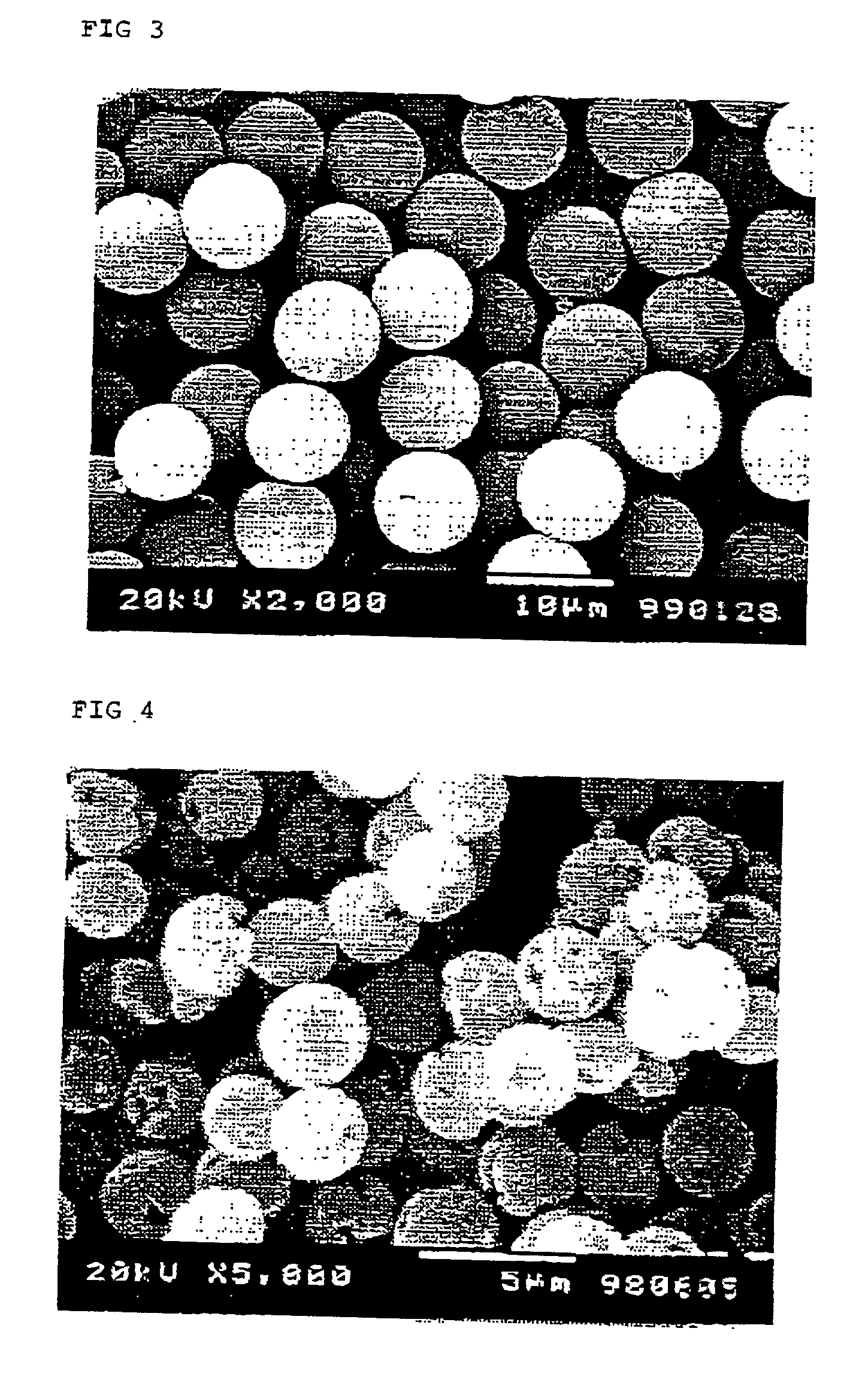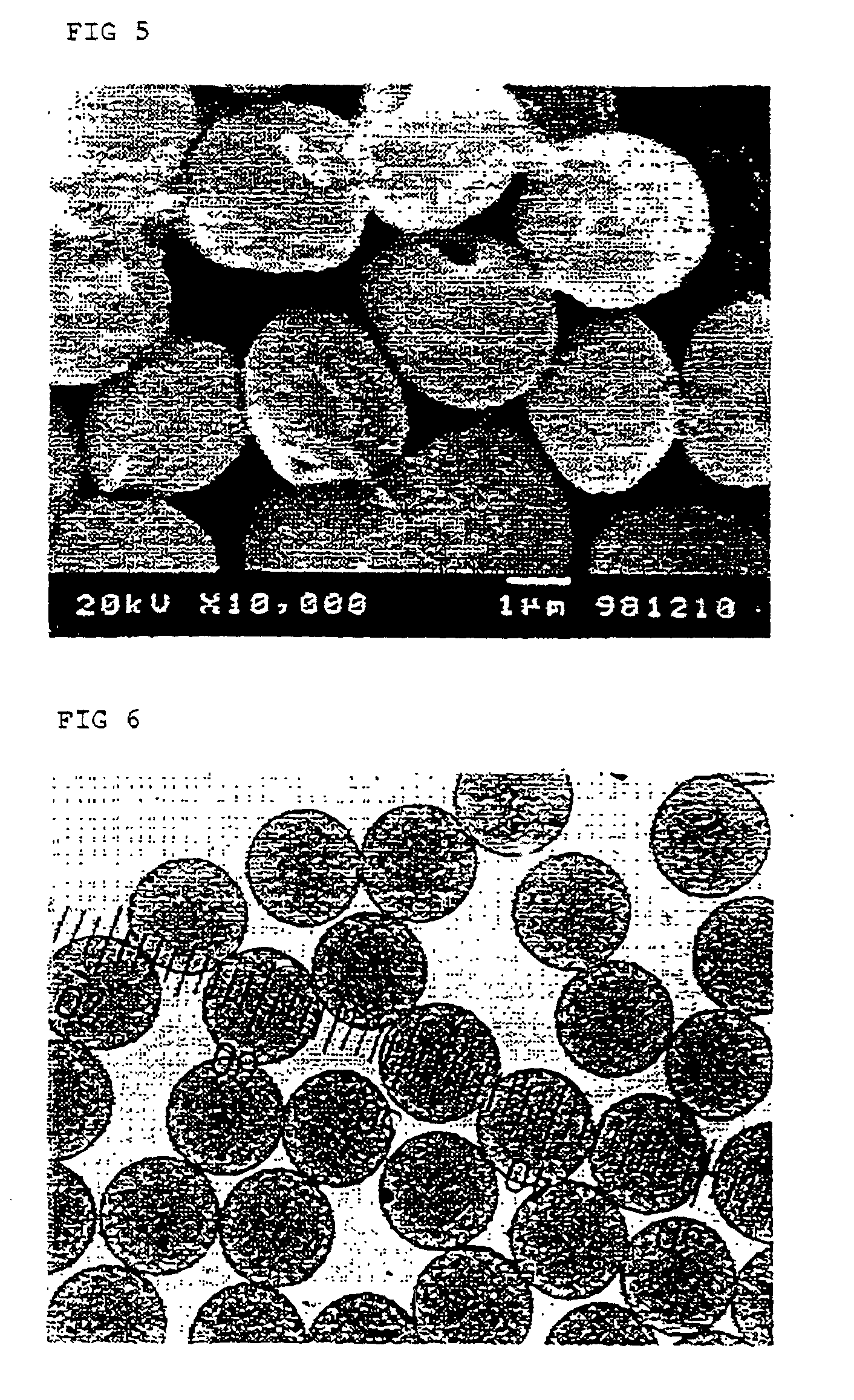Monodisperse particles, process for producing the same, and uses thereof
- Summary
- Abstract
- Description
- Claims
- Application Information
AI Technical Summary
Benefits of technology
Problems solved by technology
Method used
Image
Examples
example 2
[0054] Synthesis was conducted in the same manner as in Example 1, except that the polymerizable monomers were replaced with 37.5 g of glycidyl methacrylate and 12.5 g of ethylene glycol dimethacrylate and that the polymerization thereof was conducted without using a pore-forming agent and without adding cupric chloride. The particles obtained were monodisperse particles having a number average particle diameter of 4.2 .mu.m and a CV of 11.2%, and pores or the like attributable to seed particle phase separation was not observed thereon. An electron photomicrograph of these particles is shown in FIG. 2.
example 3
[0055] A 300 ml three-necked flask was attached to an oil bath. To the flask were introduced 30 g of n-hexyl methacrylate (special grade reagent) and 0.6 ml of ethylhexyl thioglycolate. After the contents were stirred sufficiently, 200 ml of ion-exchanged water was introduced into the three-necked flask. A condenser tube and a thermometer were attached to the flask. The atmosphere in the three-necked flask was replaced with nitrogen and the oil bath temperature was set at 70.degree. C. to heat the flask. After 1 hour, a solution prepared by dissolving 0.6 g of potassium persulfate in 20 ml of ion-exchanged water was introduced into the three-necked flask. Polymerization was continued for 20 hours while keeping the bath temperature at 70.degree. C. After completion of the polymerization, aggregates were removed with a mesh sieve of 200 .mu.m. The average particle diameter of the n-hexyl methacrylate polymer particles obtained was measured with a laser scattering type particle size di...
example 4
[0057] A 300 ml three-necked flask was attached to an oil bath. To the flask were introduced 30 g of 2-ethylhexyl methacrylate (special grade reagent) and 0.6 ml of ethylhexyl thioglycolate. After the contents were stirred sufficiently, 200 ml of ion-exchanged water was introduced into the three-necked flask. A condenser tube and a thermometer were attached to the flask. The atmosphere in the three-necked flask was replaced with nitrogen and the oil bath temperature was set at 70.degree. C. to heat the flask. After 1 hour, a solution prepared by dissolving 0.6 g of potassium persulfate in 20 ml of ion-exchanged water was introduced into the three-necked flask. Polymerization was continued for 20 hours while keeping the bath temperature at 70.degree. C. After completion of the polymerization, aggregates were removed with a 200-.mu.m mesh sieve. The average particle diameter of the 2-ethylhexyl methacrylate polymer particles obtained was measured with a laser scattering type particle ...
PUM
| Property | Measurement | Unit |
|---|---|---|
| Percent by mass | aaaaa | aaaaa |
| Solubility (mass) | aaaaa | aaaaa |
| Molecular weight | aaaaa | aaaaa |
Abstract
Description
Claims
Application Information
 Login to view more
Login to view more - R&D Engineer
- R&D Manager
- IP Professional
- Industry Leading Data Capabilities
- Powerful AI technology
- Patent DNA Extraction
Browse by: Latest US Patents, China's latest patents, Technical Efficacy Thesaurus, Application Domain, Technology Topic.
© 2024 PatSnap. All rights reserved.Legal|Privacy policy|Modern Slavery Act Transparency Statement|Sitemap



